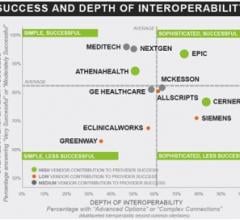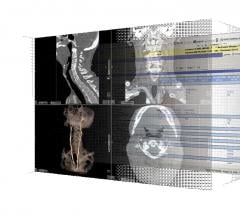If you enjoy this content, please share it with a colleague
RELATED CONTENT
Cardiac imaging accounts for about one-third of the source of X-ray radiation dose for all medical imaging. Expanding use of computed tomography (CT) for cardiac evaluations, use of nuclear imaging for myocardial perfusion exams and more complex transcatheter procedures in the cath lab have all increased patient exposure in recent years.
At the 2014 Radiological Society of North America (RSNA) meeting, Cerner Corp. will feature RadNet Radiation Dose Documentation functionality.
Cerner’s RadNet Mammography Management solutions helps facilities provide mammography services efficiently and deliver patient care. The unified Cerner Millennium healthcare information technology architecture ensures clinicians have immediate access to consistent patient information.
KLAS releases scores and analysis regarding solutions for electronic medical record (EMR) interoperability and health information exchanges (HIEs). This, to provide clarity into a market that is cluttered with competing claims.
August 6, 2014 — Cerner Corp. and Siemens AG announced the signing of a definitive agreement for Cerner to acquire the assets of Siemens' health information technology business unit, Siemens Health Services, for $1.3 billion in cash.
Today’s digital picture archiving and communication systems (PACS) is highlighted with several choice words around the industry: accessible, flexible, Web-based, thin client versus thick client and vendor-neutral. Whatever term is used to describe the PACS of today and the future, one thing is clear: the aim now is to be able to store medical images, sourced from any modality, in a secure location on a network and retrieve them for review from any platform or any device.
Countries across the globe are struggling to combat issues such as escalating healthcare costs, poor or inconsistent quality of healthcare, rapid expansion in healthcare insurance and changing healthcare reform mandates. Growing consumerism, globalization, changing demographics and lifestyles, and growing incidences of diseases that are expensive to treat further exacerbate these. Resolving these issues is a daunting task faced by healthcare stakeholders, highlighting the need for proactive, collaborative and systemic models. Several initiatives and healthcare reforms have been developed in order to support the adoption and implementation of clinical decision support software (CDSS) solutions.
The market for electronic health and medical records (EMRs) is set to experience rapid growth over the coming years, with EMR peer group value estimated to climb from approximately $10.6 billion in 2012 to $17 billion by 2017, at a Compound Annual Growth Rate (CAGR) of 9.8 percent, according to research and consulting firm GlobalData.
KLAS spoke to 176 providers to identify strengths and weaknesses of best-of-breed and enterprise vendors and found the two competitive, according to the report Oncology 2013: Eyes Wide Open.
Cerner RadNet Radiology Information System (RIS) provides the tools to work more efficiently while providing patients with a positive personal experience and delivering superior care.


 February 18, 2015
February 18, 2015 





